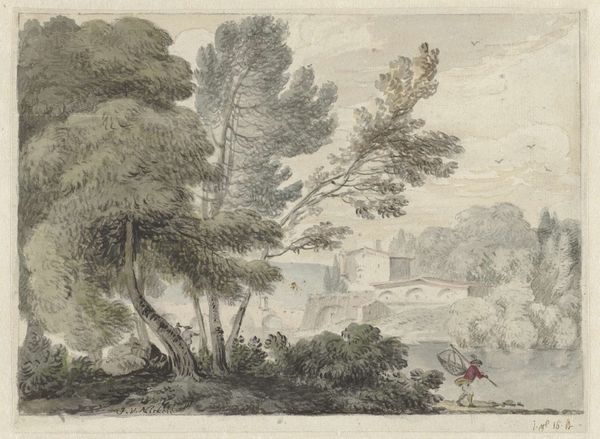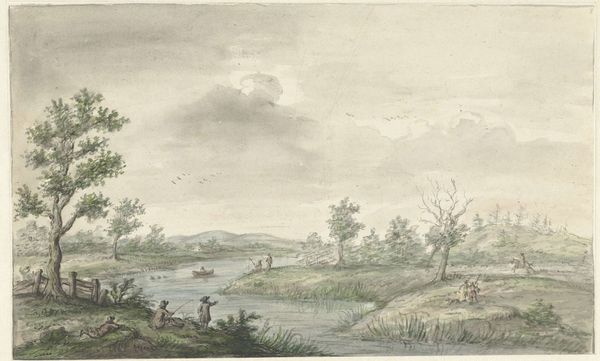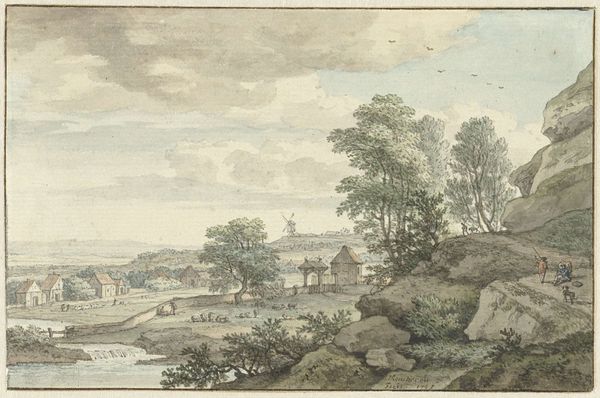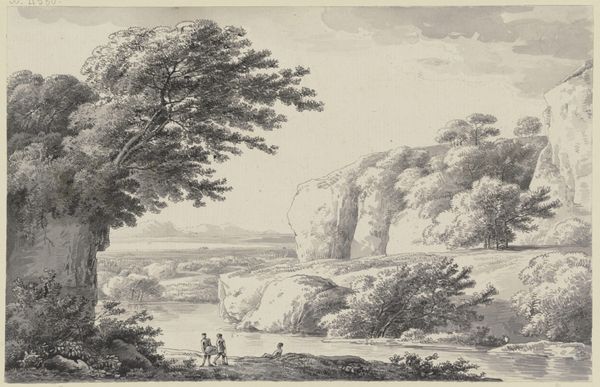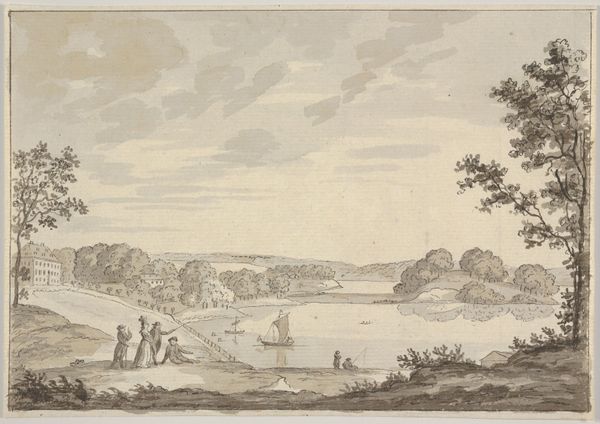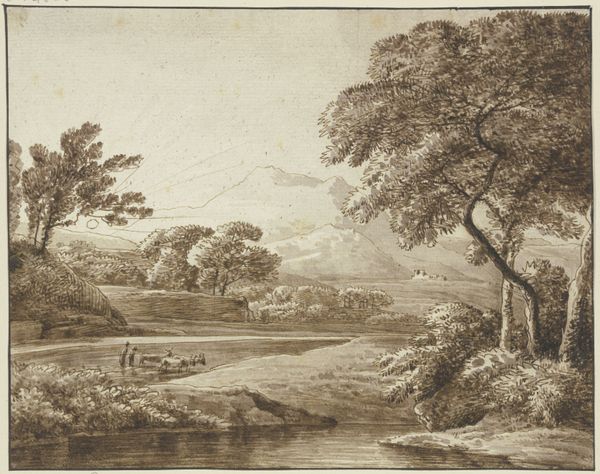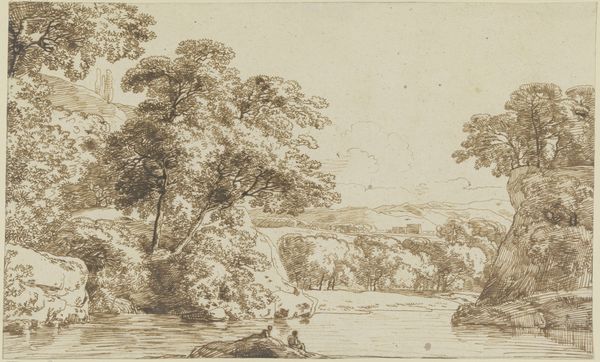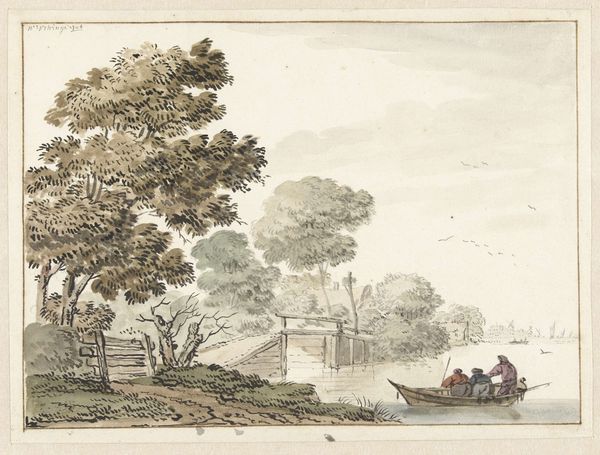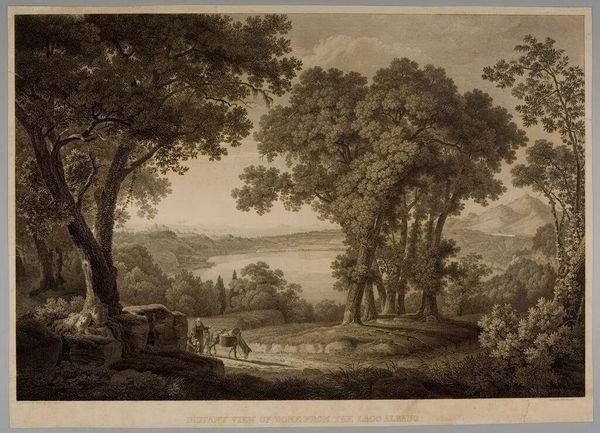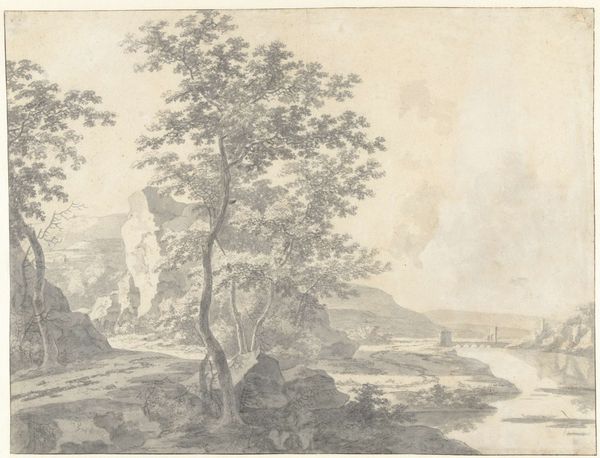
drawing, plein-air, watercolor
#
drawing
#
plein-air
#
landscape
#
watercolor
#
romanticism
#
genre-painting
#
watercolor
Dimensions: height 404 mm, width 527 mm
Copyright: Rijks Museum: Open Domain
Editor: This is Jean Grandjean's "View of Castel Gandolfo and Lake Albano," created sometime between 1761 and 1817. It’s a watercolor drawing done en plein air. I’m really drawn to its tranquil atmosphere and how the artist captured the soft light. What stands out to you in this piece? Curator: I observe first and foremost the masterful rendering of spatial depth achieved through subtle gradations of tone and a controlled atmospheric perspective. The interplay of light and shadow articulates form, defining the various planes within the composition, drawing the eye from the foreground grouping of figures and animals, towards the distant, barely visible Castel Gandolfo. Editor: It does feel like my eye is led through the entire landscape. Could you elaborate more on the composition? Curator: Certainly. Note the strategic placement of the tree on the left; it acts as a repoussoir, framing the vista. Consider also how the undulating rhythm of the shoreline echoes in the gentle curves of the land and the clouds. There is a visual coherence in this repetition, an aesthetic principle evident in much Romantic landscape art. Is this visual language intentional? In theory, of course, as artistic schools adopted agreed upon "dialects". But, what does this dialect communicate, when it moves through nature so convincingly? Editor: That’s fascinating! I hadn’t considered the repeating curves, but now I see how they unify the image. I had focused on the story being told. Curator: Genre elements are employed within a broader pictorial field, subordinate to a unifying atmospheric and topographical concern. Ask yourself, to what end has the artist reduced such a thing of complex majesty to mere shapes in pleasing proximity? Perhaps, as viewers, our drive for sense-making surpasses any possibility of finding actual sense in the piece. Editor: That's given me a lot to consider about how artists use form to express ideas! Thanks. Curator: Indeed, a painting is, above all, a carefully constructed arrangement of lines, colors, and forms and also maybe nothing much else at all. It's all thought-provoking.
Comments
No comments
Be the first to comment and join the conversation on the ultimate creative platform.
